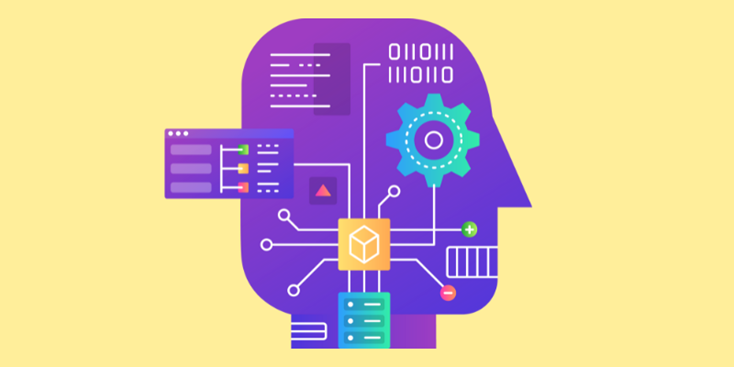How to Harness the 'Human Algorithm’
3 min read.
Technology is a boon for a data-driven marketing strategy, but in order to really connect with your audience, nothing can really replace the human element and emotions are just as important in the decision-making process...
Advances in technology and the digital sector in particular are shifting the way we interact with the world and with each other, driving constant change and shifts in human behaviour. As employer brand marketers, we have to stay ahead of the curve as we adapt to this ever-changing landscape.
We have Big Data and technology which is certainly helping us with the science part in allowing us to make informed, intelligent decisions as we take numbers and apply interpretation. But we can’t learn everything from technology and big data.
And now the buzz is around artificial intelligence and how that can transform processes and tasks in a way that could fundamentally alter the working landscape forever.
But technology can’t do everything. Not even artificial intelligence.
What about the art? That feeling and subconscious know-how that we all spend years training as we develop and gain experience.
Research into neuroscience demonstrates that the brain is subconsciously aware of our decisions before we actually make them. In other words, we’ve already come up with a decision or an answer, before we even realise it.
Consider Formula 1 racing. It uses incredible real time analytics not just at the race venue but real-time, big data beamed from a car driving at up to 200mph on a race track on one side of the globe to the race team’s headquarters on the other. They have hundreds of incredibly smart people monitoring that data – providing insight and informing the team, the driver and adapting strategy accordingly.
But that technology cannot feel, hear and see. You need all the senses of the driver who will know if and when something feels right.
He feels first and thinks second.
Creating a Customer-Centric Culture in a Digital World
Digital technology can be a huge relationship killer if we’re not careful. It is important to make sure the decisions we take using technology help us get closer to the customer, not further away through poor automation and execution that makes communication impersonal.
Don’t get me wrong, we embrace technology and have a thirst for it. But, we have a passion for people first.
This is why, more than ever before we should be investing in understanding what makes people tick. This is where customer experience (CX) and business strategy meet.
It’s the ‘human algorithm’ that provides marginal gains and will give you a competitive advantage in your talent attraction efforts.
When did you last look at your customer. When did you last walk in their shoes? Did you really take time to listen, talk (face to face, not just digitally) get them involved, watch and learn from them? When did you last show them that you care?
Look at the journey we ask customers to take from the moment they first touch the brand; online or offline. Gain insight into what they are feeling and thinking as they go through this process. Like never before customers engage with brands via multiple channels and devices. There are so many touch points – some of which you might not even know about. Consider at each stage of communication – how easy was this process for them? What would they remember about you at each point? Would they be compelled to shout from the rooftops about their experience … good or bad?
Try mapping out those points with customer journey mapping and investigate at each step. Then, consider what your customer thinks and, more importantly, how they feel at each stage of that journey. It is this process that keeps us constantly connected to the all-important human side of sales and marketing.
Use empathy mapping to gain insight on what your customer’s emotions are throughout their journey with your brand. Do they feel positive or negative? Happy or sad? Have you designed for happiness?
Have you planned your ‘attack and defence’? We’re often great at planning for things we believe will provide happiness but what about when it doesn’t go to plan? Have you planned for unhappiness? How do you spot it? Have you prepared your people for that potential outcome?
Unleashing the Potential of Emotional Engagement in Employer Branding
By running a customer experience session you will uncover things that shock and surprise you. And you will spot moments of magic; golden nuggets that will enable you to make significant improvements to your customers’ experience and how you make them feel about you when they engage with your brand.
By tuning into emotions we can create a state of positive engagement with our brand and business. And this is proven in biology. When we experience a heightened emotional state, we release dopamine which acts as the save button of our brains. That means that by creating highly emotional experiences, we become memorable to our audience. Humans naturally like to share stories of great, emotional resonance – in simple terms – we love to tell the world when we are happy.
But we can go deeper than that. More than ever before, in a digital world full of tech, we need a culture of customer first.
“Culture,” said Brian Chesky, CEO of Airbnb “is simply a shared way of doing something with passion.”
Passion is an incredibly powerful human emotion. Put passion into all you do in your quest to create world class experiences for your customers. Recruit those who share your passion for the customer and you will organically grow a culture with your customer at its heart.
In a world where there’s always more tech and we become immersed in more things digital, the one thing that we will always remain is human.

